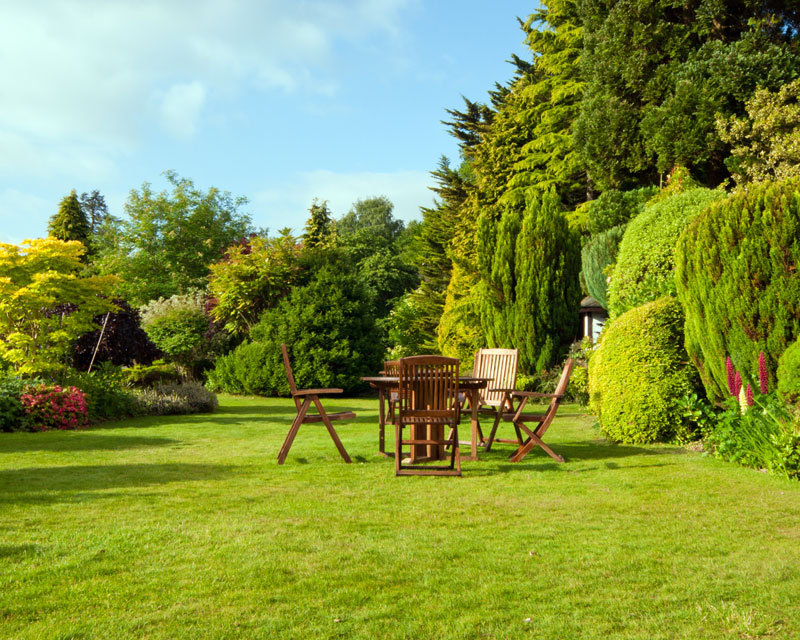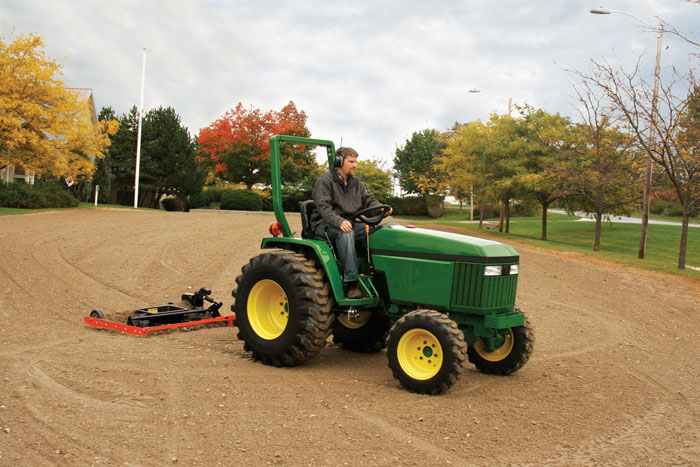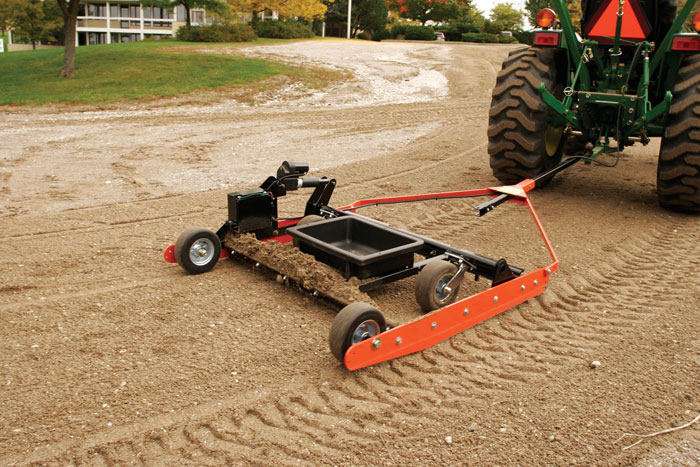
When to grade the lawn
If you are replacing an existing lawn or weed-infested area, the first step will be to remove the existing plant life. There are a number of tactics for doing this, including solarization, herbicides, or manually removing it with a hoe or sod cutter. Be careful with herbicides, as some of the chemicals can remain in the soil and prevent future grass from growing. Then, once all that is left is soil, you’ll want to rototill it until it is fluffy and well aerated. Now it’s time to grade.


You can grade by hand with a handheld landscape rake, or with a towed grader. We recommend a towable grader for medium to large lawns – anything larger than about 1/4 acre – but for smaller areas, a manual rake will be easier. Take a look at the area and make a note of the ups and downs in the terrain. Ultimately, you want the ground to be mostly flat, but sloping slightly upward as it approaches houses and other structures. In other words, you want to create a slope such that water will not pool around your home’s foundation, but will be shed away from the structure. This will allow for proper drainage and help protect your basement and foundation from damage.

Start by grading the bulk of the lawn until it appears flat and free of dips and holes. Then go back with a manual landscape rake and ensure that there are slight slopes up to your house, barn, garage, or any other structures.
The result
After either seeding the lawn or installing your sod, you’ll notice that a well-graded lawn will look nicer, be easier to maintain, and will have far fewer drainage issues than one which was not graded. It’s an important step, so don’t forget it!